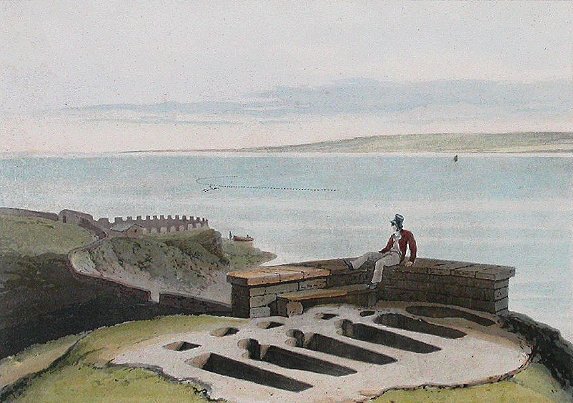The first stage of St Patrick’s Chapel was built in the early 8th Century. It has been identified as an-early focal point in both Anglo-Saxon and Roman Christianity. The first stage of the building was a narrow oblong structure with a doorway facing to the south. That doorway still stands today. The chapel is small and would probably have housed an object of religious significance inside whilst religious services would have been held outside. Legend has it that the chapel is dedicated to St Patrick as he landed here in the 5th century.
The graves and chapel hold several mysteries which have puzzled archaeologists over the years. The rock cut or stone graves are Grade 1 listed as is nearby St Patrick's Chapel. Both are now in the care of the National Trust. The tombs (8 in all) are thought to have been the resting place for the bones of rich or important people. Amongst the 8 tombs there is one apparently for a child. In 1977 and again in 1978 an extensive archaeological investigation of the Chapel and the graves was conducted by T W Potter and R D Andrews. Their investigations are recorded in great detail in The Antiquaries Journal 1994 Vol LXXIV. The diagram below is reproduced from that document.
The group of rock graves pictured by Daniell can be seen near the top of the diagram. Potter and Andrews also record that an earlier reference to the graves than the Daniell illustration is by Bishop Gastrell, in his Notitia Cestriensis, 1725.
In 1851 John Robson described a visit to St Patrick’s Chapel in the Journal of the Historic Society of Lancashire and Cheshire. Click here to view it.
‘View near Lower Heysham’ : William Daniell : © Tate Gallery.
In Portugal there is are some similar rock cut graves at a well known site the Necropole de San Gens, consisting of around twenty rock-cut sepulchres surrounding the 'Pedra do Sino' - The 'Bell-Stone'. The picture below is reproduced from Ancient-Wisdom.co.uk with their permission.



